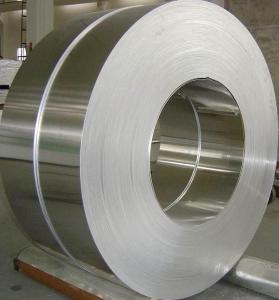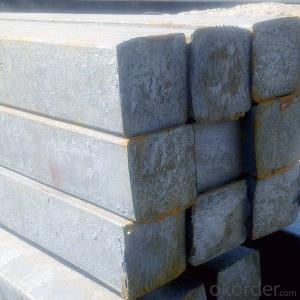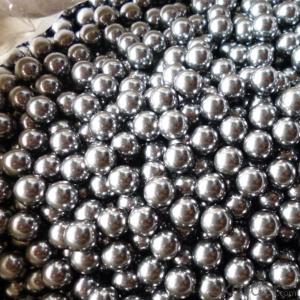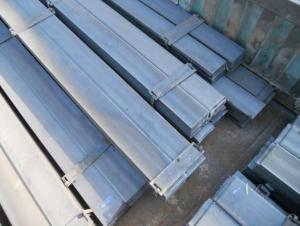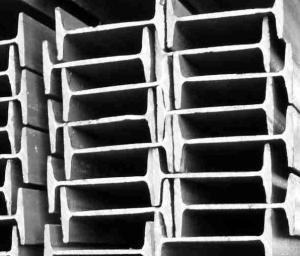TSC Pile
- Loading Port:
- China Main Port
- Payment Terms:
- TT OR LC
- Min Order Qty:
- -
- Supply Capability:
- -
OKorder Service Pledge
Quality Product, Order Online Tracking, Timely Delivery
OKorder Financial Service
Credit Rating, Credit Services, Credit Purchasing
You Might Also Like
We mainly engaged in manufacturing PHC concrete piles with diameters of Φ600~Φ1400 for wharf. Every year, the company produces various types of concrete piles of over 150,000 meters with single-section pile of 41meter long and annual gross output value up to RMB 600 million.
With years’ manufacturing experience of concrete piles and a great number of excellent technological and management talents, the company persists in technical innovation and research of new products. The large-diameter PHC concrete piles with merits such as good bending strength, large bearing capacity, fine resistance against the external force and so forth have been the preferential choice of structural materials for foundation engineering construction such as large ports, wharfs, shipyard, huge bridges, high-rise buildings, heavy factories, high-speed railway, etc.
The company holds the operation philosophy of “honest, practical and harmonious for win-win” and persists in the quality guideline of “constant improvement with prohibition of non-conforming products into construction site” to provide you sincerely with superior products and service.
- Q:Can steel pipes be used for stormwater management systems?
- Yes, steel pipes can be used for stormwater management systems. Steel pipes are commonly used in stormwater management systems due to their durability, strength, and resistance to corrosion. They can efficiently handle the flow of stormwater and are suitable for underground installation, making them a reliable choice for managing stormwater runoff.
- Q:Is there a type of spray paint that would work on Stainless steel?That would also be permenant or at least make it through a wash or two?
- I've also learned something today! Good luck and have fun!
- Q:Q235's steel plate and channel steel were rusted in the rain. The corrosion is not too serious, but it looks obvious. Will this product be rejected? Is there a standard in this respect?Please answer professionals, thank you.
- Steel plate surface defects are allowed to be cleaned and cleaned, but the minimum thickness of the steel plate shall be ensured. Grinding and cleaning should be smooth, without edges and corners. When welding is required, it shall be carried out according to the provisions of GB/T 14977.
- Q:Are steel rebars susceptible to rust?
- Yes, steel rebars are susceptible to rust. Rebars are typically made of carbon steel, which contains iron. When exposed to moisture and oxygen, iron reacts to form iron oxide, commonly known as rust. This process is accelerated in the presence of salt or other corrosive substances. Rust formation weakens the rebars and can eventually lead to structural damage if left untreated. Therefore, it is crucial to protect steel rebars by applying an appropriate coating or using other corrosion prevention methods to ensure the longevity and structural integrity of reinforced concrete structures.
- Q:Can steel strips be used in the production of metal roofing panels?
- Yes, steel strips can be used in the production of metal roofing panels. Steel strips are commonly used as the base material for metal roofing panels due to their durability, strength, and resistance to corrosion. They are typically coated with materials like zinc or aluminum to further enhance their protective properties. This process ensures that the metal roofing panels have a long lifespan and can withstand various weather conditions, making them a popular choice for residential and commercial buildings.
- Q:What are the different wire mesh options available in stainless steel wire?
- Stainless steel wire offers a variety of wire mesh options, each with its own unique characteristics and uses. Firstly, there is the plain weave. This basic and common type of wire mesh is crafted by interweaving the wires in a simple crisscross pattern. The result is a strong and long-lasting mesh that is widely employed in applications such as filtration, sieving, and screening. Next, we have the twill weave. This type of wire mesh showcases a diagonal pattern formed by passing the weft wire over and under two warp wires. Compared to plain weave, twill weave offers a tighter and stronger weave. It finds extensive use in industrial filtration, separation, and conveyor belt applications. Another option is the Dutch weave, which combines elements of both plain and twill weaves. By using thick wires for the warp and thin wires for the weft, this mesh achieves high durability and fine filtration capabilities. The Dutch weave is particularly suitable for precise filtration and separation needs in industries like chemicals, pharmaceuticals, and food. For those seeking strength and rigidity, there is the welded wire mesh. As its name implies, this mesh is created by welding the wire intersections. It is perfect for applications requiring sturdy barriers or reinforcement, such as construction, fencing, and animal enclosures. The reverse Dutch weave is similar to the Dutch weave, but with thicker warp wires. This variation is often chosen for high-pressure filtration due to the enhanced stability and resistance provided by the thicker warp wires. Lastly, there is the crimped wire mesh. This mesh is made by weaving wires with crimped patterns, resulting in a mesh with uniform openings. The crimped wire mesh stands out for its flexibility and resilience, making it ideal for applications that necessitate vibration resistance, like mining, construction, and architecture. These examples represent just a fraction of the numerous stainless steel wire mesh options available. The choice of mesh ultimately depends on the specific requirements of the application, including factors such as filtration precision, strength, flexibility, and durability.
- Q:What are the common applications of cold-rolled steel strips?
- Cold-rolled steel strips are commonly used in various applications such as automotive components, construction materials, home appliances, electrical equipment, and industrial machinery.
- Q:Are stainless steel bars suitable for the production of hydraulic cylinders?
- Hydraulic cylinders can be effectively produced using stainless steel bars. Stainless steel is a versatile material that provides numerous benefits for hydraulic cylinder applications. Firstly, its exceptional resistance to corrosion makes it highly suitable for hydraulic systems exposed to moisture or corrosive environments. This corrosion resistance ensures that hydraulic cylinders have a longer lifespan and require minimal maintenance. Secondly, stainless steel bars possess remarkable strength and durability, which is essential for hydraulic cylinders that must withstand heavy loads and high pressures. The material's strength enables the creation of compact and lightweight hydraulic cylinders without compromising performance. Furthermore, stainless steel exhibits excellent heat resistance, enabling hydraulic cylinders to function efficiently even in high-temperature conditions. This feature is particularly vital for hydraulic systems that generate heat during operation. Additionally, stainless steel bars can be machined and fabricated to meet the specific requirements and dimensions of hydraulic cylinders. The material's flexibility empowers manufacturers to produce hydraulic cylinders with intricate designs and complex shapes. In conclusion, stainless steel bars are an ideal choice for the production of hydraulic cylinders due to their corrosion resistance, strength, durability, heat resistance, and versatility in fabrication.
- Q:What are the different mechanical testing methods used for steel wire rod?
- The quality and performance of steel wire rod can be assessed through several commonly used mechanical testing methods. These methods include: 1. Tensile testing, which measures the ultimate tensile strength, yield strength, and elongation of the wire rod by applying a pulling force until it breaks. This test helps determine the wire rod's ability to withstand stretching or pulling forces without breaking. 2. Hardness testing, which evaluates the wire rod's resistance to indentation or penetration by a hard object. Different hardness testing methods, such as Brinell, Rockwell, and Vickers, can be used to measure the wire rod's strength and durability. 3. Bend testing assesses the wire rod's ability to withstand bending forces without failure by bending it to a specified angle and examining it for cracks or fractures. This is important for applications requiring flexibility or resistance to deformation. 4. Fatigue testing evaluates the wire rod's resistance to repeated loading and unloading cycles, which it often experiences during its service life. This test helps determine its endurance limit, fatigue strength, and fatigue life, ensuring its reliability in applications with dynamic or cyclic loads. 5. Impact testing measures the wire rod's ability to absorb energy and resist fracture under high-velocity loading. This is crucial for applications involving machinery or structural components that may encounter sudden impact or shock loads. By utilizing these various mechanical testing methods, manufacturers and users of steel wire rod can guarantee its quality, performance, and suitability for specific applications.
- Q:Are steel flat bars prone to warping or twisting?
- Warping or twisting is uncommon in steel flat bars due to their inherent strength and structural integrity. Steel is widely recognized for its reliability in various applications. However, it is worth noting that if steel flat bars are exposed to excessive heat or extreme environmental conditions, they may become susceptible to warping or twisting. To avoid potential deformation, it is recommended to employ proper handling and storage techniques. Furthermore, the resistance of steel flat bars to warping or twisting can be influenced by their quality and manufacturing process. When precision and strict quality control measures are applied, high-quality steel flat bars are unlikely to encounter significant warping or twisting issues.
1. Manufacturer Overview |
|
|---|---|
| Location | |
| Year Established | |
| Annual Output Value | |
| Main Markets | |
| Company Certifications | |
2. Manufacturer Certificates |
|
|---|---|
| a) Certification Name | |
| Range | |
| Reference | |
| Validity Period | |
3. Manufacturer Capability |
|
|---|---|
| a)Trade Capacity | |
| Nearest Port | |
| Export Percentage | |
| No.of Employees in Trade Department | |
| Language Spoken: | |
| b)Factory Information | |
| Factory Size: | |
| No. of Production Lines | |
| Contract Manufacturing | |
| Product Price Range | |
Send your message to us
TSC Pile
- Loading Port:
- China Main Port
- Payment Terms:
- TT OR LC
- Min Order Qty:
- -
- Supply Capability:
- -
OKorder Service Pledge
Quality Product, Order Online Tracking, Timely Delivery
OKorder Financial Service
Credit Rating, Credit Services, Credit Purchasing
Similar products
New products
Hot products
Related keywords









